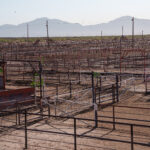When asked about current economic conditions, especially related to downsizing, many CEOs cite concerns surrounding human resources issues. How will terminated employees handle the situation? How might increased workloads for remaining employees affect the operation as a whole? How will productivity change due to employees covering areas in which they do not specialize?
While these are valid concerns, a common unrealized exposure from downsizing arises in the area of asset protection. When a company is forced to consolidate operations to fewer locations, it might not have as much protection as it thinks on vacant buildings. The value of insurance settlements for claims occurring at unoccupied locations could be drastically lower than for claims in occupied buildings.
ISO has defined a vacant building as one which “has been left vacant or unoccupied for a period of 60 consecutive days.” Once a building has met the 60-day standard, a policy’s vacancy clause is automatically triggered. A vacancy clause removes coverage for the following perils:
- Vandalism
- Building glass breakage
- Water damage
- Theft or attempted theft
- Sprinkler leakage
In addition to the removal of those perils, any other covered cause of loss (fire, wind, collapse, etc.) is penalized by 15 percent. Thus, a total loss due to fire on a building valued at $200,000 would be paid at $170,000.
Insureds facing reduced settlements often ask why they were not notified that coverage would be restricted. Since carriers often only discover a vacancy after a loss has occurred, no notice is required from them. In addition, since the vacancy clause is part of the original policy form, there is no premium reduction associated with the restriction in coverage.
Following are responses to questions insureds frequently ask about vacant buildings:
We have reduced staff and operations at one of our locations, but some people are still there. What constitutes vacancy?
In the current edition of the Commercial Property form (CP 00 10) and Business Owners Policy (BP 00 03), a building is considered vacant or unoccupied if less than 31 percent of the total building square footage is leased to a third party lessee or being used for normal operations for 60 or more consecutive days.
We have a facility that will be vacant for the foreseeable future. What can we do to avoid a reduction in coverage?
Vacant buildings require special underwriting. Notify your insurance broker or agent of the change in operation. Ask for a proposal for vacant building coverage.
Is vacant building coverage going to cost more?
Yes, the policy premium will be higher than a standard premium because the exposures for vandalism, theft, frozen pipes, etc., are far greater for vacant buildings. However, while it means paying more up-front, a vacant building policy provides full coverage. During any economic climate, it is important to keep an eye on human resources, property, liability and net income. Paying attention to vacant building exposures minimizes the risk of financial loss from a reduced settlement.
Was this article valuable?
Here are more articles you may enjoy.


 Brown & Brown Files Suit Over Alleged Howden Poaching of 200+ Employees
Brown & Brown Files Suit Over Alleged Howden Poaching of 200+ Employees  CEO Sentenced in Miami to 15 Years in One of the Largest Health Care Fraud Cases
CEO Sentenced in Miami to 15 Years in One of the Largest Health Care Fraud Cases  UPS Ripped Off Seasonal Workers With Unfair Pay Practices, Lawsuit Alleges
UPS Ripped Off Seasonal Workers With Unfair Pay Practices, Lawsuit Alleges  More US Beef Plants May Close as Cattle Herds Keep Tightening
More US Beef Plants May Close as Cattle Herds Keep Tightening 


